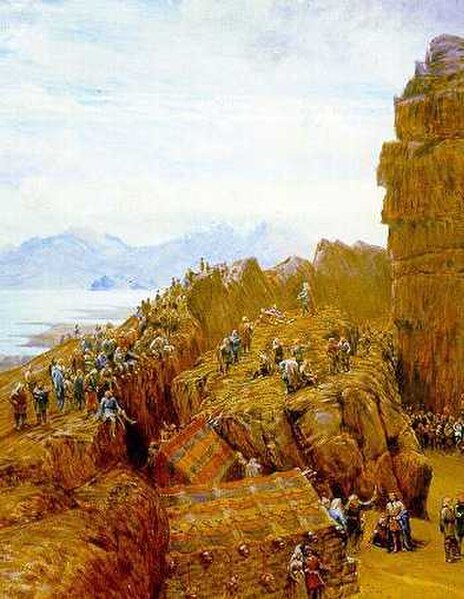The Alþingi, anglicised as Althingi or Althing, is the supreme national parliament of Iceland. It is one of the oldest surviving parliaments in the world. The Althing was founded in 930 at Þingvellir, situated approximately 45 kilometres (28 mi) east of what later became the country's capital, Reykjavík. After Iceland's union with Norway in 1262, the Althing lost its legislative power, which was not restored until 1903 when Iceland gained Home Rule from Denmark. For 641 years, the Althing did not serve as the parliament of Iceland, ultimately power rested with the Norwegian, and subsequently the Danish throne. Even after Iceland's union with Norway in 1262, the Althing still held its sessions at Þingvellir until 1800, when it was discontinued. It was restored in 1844 by royal decree and moved to Reykjavík. The restored unicameral legislature first came together in 1845 and after 1874 operated in two chambers with an additional third chamber taking on a greater role as the decades passed until 1991 when Althing became once again unicameral. The present parliament building, the Alþingishús, was built in 1881, made of hewn Icelandic stone. The unicameral parliament has 63 members, and is elected every four years based on party-list proportional representation. The current speaker of the Althing is Birgir Ármannsson.

19th-century rendering of the Law Rock in Þingvellir.
Parliament House (right), at Austurvöllur in Reykjavík, built 1880–1881.
Icelandic is a North Germanic language from the Indo-European language family spoken by about 314,000 people, the vast majority of whom live in Iceland, where it is the national language. Since it is a West Scandinavian language, it is most closely related to Faroese, western Norwegian dialects, and the extinct language Norn. It is not mutually intelligible with the continental Scandinavian languages and is more distinct from the most widely spoken Germanic languages, English and German. The written forms of Icelandic and Faroese are very similar, but their spoken forms are not mutually intelligible.
A page from the Landnámabók, an early Icelandic manuscript
Photograph taken from page 176 of Colloquial Icelandic
Eyjafjallajökull, one of the smaller ice caps of Iceland, situated to the north of Skógar and to the west of Mýrdalsjökull, is Icelandic for "glacier of Eyjafjöll", in turn "glacier of island mountains".





